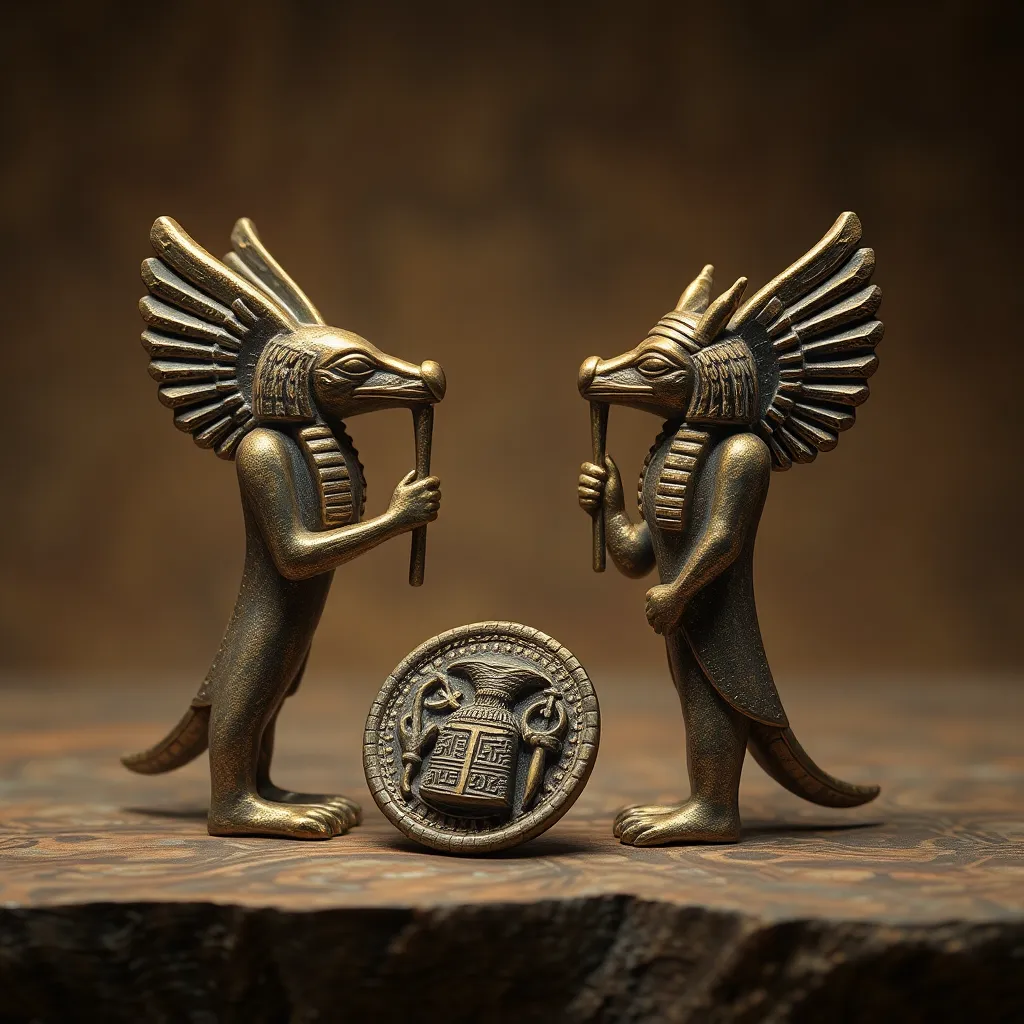The Role of Amulets in Egyptian Artistic Expression
I. Introduction
In ancient Egyptian culture, amulets were small objects believed to hold protective and magical properties. They were crafted in various shapes and materials, each imbued with specific meanings and purposes. Amulets played a crucial role in the daily lives of the Egyptians, providing protection, ensuring health, and connecting individuals to the divine. This article will explore the artistic expression surrounding amulets, examining their significance, craftsmanship, and lasting impact on both ancient and modern cultures.
II. Historical Context of Amulets in Ancient Egypt
The use of amulets in ancient Egypt dates back to the predynastic period, evolving significantly through the various dynasties. Initially, amulets were simple and utilitarian but grew in complexity and artistry over time.
- Origins: The earliest amulets were made from natural materials like stones and bones, believed to offer basic protection.
- Evolution: As Egyptian society advanced, amulet designs became more intricate, incorporating precious materials and elaborate artistry.
- Cultural Shifts: Changes in religious beliefs, such as the rise of Osiris worship, influenced the types of amulets that were popular at different times.
III. Symbolism and Meanings of Common Amulet Types
Amulets came in various shapes, each associated with specific meanings and protective qualities. Understanding these symbols provides insight into the values and beliefs of ancient Egyptians.
- Scarabs: Symbolizing resurrection and transformation, scarabs were popular amulets believed to protect the wearer in the afterlife.
- Ankhs: Representing life and immortality, the ankh was often used in jewelry and was a powerful symbol in funerary art.
- Eye of Horus: A symbol of protection, royal power, and good health, the Eye of Horus was commonly worn as an amulet.
The colors and materials used in amulet creation also held significant meaning:
- Green: Symbolized fertility and rebirth.
- Blue: Associated with protection and creation.
- Gold: Represented eternity and was often used for the most powerful amulets.
IV. Amulets in Egyptian Art and Craftsmanship
The craftsmanship of amulets was a highly regarded skill in ancient Egypt, with artisans employing various techniques to create these meaningful objects.
- Techniques: Amulets were carved, molded, and sometimes inlaid with other materials to create intricate designs.
- Artistic Styles: Different dynasties exhibited unique artistic styles in their amulet designs, reflecting the cultural tastes of the time.
- Relationship with Other Art Forms: Amulets often complemented other artistic expressions, such as jewelry and sculpture, showcasing the interconnectedness of art in ancient Egypt.
V. Amulets in Religious and Funerary Contexts
Amulets held a significant place in ancient Egyptian religious practices, especially concerning burial and funerary customs. They were believed to provide the deceased with protection and guidance in the afterlife.
- Burial Practices: Amulets were placed within tombs or on mummies to ensure the protection of the dead against malevolent forces.
- Safe Passage: Specific amulets were intended to ensure a safe journey to the afterlife, often inscribed with prayers and spells.
- Archaeological Finds: Numerous archaeological discoveries, such as those in the tomb of Tutankhamun, have revealed the extensive use of amulets in funerary contexts.
VI. The Role of Amulets in Everyday Life
Beyond their religious significance, amulets were common personal adornments in ancient Egyptian society, reflecting both individual beliefs and social status.
- Personal Adornments: Many Egyptians wore amulets as part of their daily attire, believing they would provide ongoing protection and luck.
- Art and Practicality: Amulet designs often blended artistic expression with practical function, serving both aesthetic and spiritual purposes.
- Status Symbols: The material and intricacy of an amulet often indicated the social standing of the owner, with wealthier individuals favoring gold and elaborate designs.
VII. Legacy of Egyptian Amulets in Modern Art and Culture
The influence of ancient Egyptian amulets extends into modern culture and artistic practices, where they continue to inspire and intrigue.
- Contemporary Art: Many artists draw inspiration from the designs and meanings of ancient amulets, incorporating them into modern artworks.
- Modern Spiritual Practices: Interest in amulets has surged in contemporary spirituality, with many adopting similar symbols for protection and empowerment.
- Cultural Artifacts: Collecting and preserving ancient amulets has become a significant aspect of cultural heritage efforts, highlighting their historical value.
VIII. Conclusion
The multifaceted role of amulets in ancient Egyptian artistic expression reveals much about the culture’s values, beliefs, and daily life. From their origins and evolution to their deep-seated connections with art, religion, and personal identity, amulets serve as a lens through which we can better understand the complexities of ancient Egyptian civilization. The enduring significance of these artifacts underscores the profound intersection of art, spirituality, and daily life in ancient Egypt, inspiring continued fascination and study in modern times.




